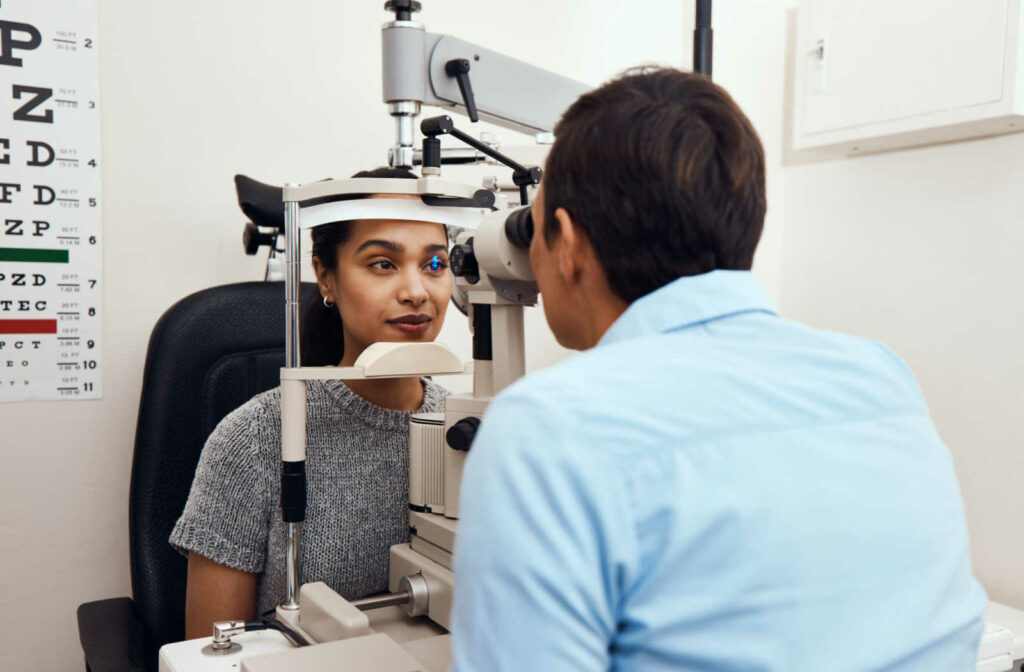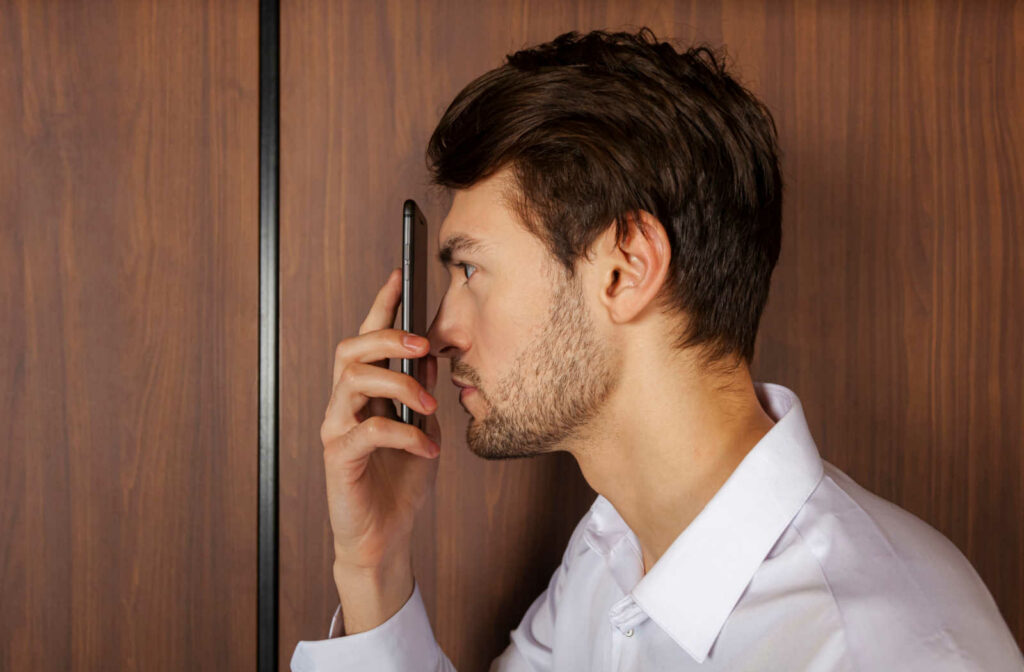Myopia, commonly known as nearsightedness, is an eye condition that usually develops in childhood and adolescence. It’s the inability to see distant objects clearly, while nearby objects are visible.
Many people wonder if myopia is reversible. While there’s no cure, treatments that control myopia, such as glasses and contact lenses, can help slow its progression.
Children’s learning and growth typically depend on their visual system. So regular children’s eye exams are crucial to detect the early signs of myopia.
What Is Myopia?
Myopia is a refractive error in the eye, which means that the eye’s shape does not allow light to bend properly, resulting in blurry vision. It occurs when the eye is too long, or the cornea is too steep, causing light to focus in front of the retina (the light-sensitive tissue at the back of the eye) instead of on it, resulting in blurry distant vision.
During childhood, the eyes continue to grow. As a result, myopia often develops in childhood. It worsens until the eyes stop growing and stabilize between the early 20s and age 40.
Children with myopia don’t typically know they have vision problems, such as difficulty seeing things. Some signs and symptoms of myopia can include:
- Blurry distant vision
- Squinting or partially closing the eyelids to see clearly
- Headaches
- Eyestrain
- Unaware of distant objects
- Excessive blinking
- Eye rubbing
- Sitting close to the television or blackboard
Risk Factors for Myopia
Anyone can develop myopia, but your risk is higher with the following factors:
- Myopia can be inherited. Your risk of developing myopia is high if one parent has myopia and even higher if both parents have it.
- Prolonged near-work and other close-up activities, such as reading, can increase your risk of myopia.
- Long periods in front of screens can lead to a higher risk of developing myopia.
- Lack of time outdoors may increase your risk of becoming myopic.
Mild to severe myopia can lead to several complications, including:
- Eye strain
- Headaches
- Poor school experiences
- Difficulty seeing while driving
- Reduced quality of life
- Increased risk of other eye conditions, such as cataracts, glaucoma, and retinal detachment
Can Myopia be Reversed?
As the eye keeps growing and depending on the severity of myopia, children’s prescriptions may remain the same or change frequently. There is no reversing myopia or changes to eye shape.
While corrective lenses, such as glasses and contact lenses, can help bend light properly to correct blurry vision, it’s not a cure for myopia. The goal of some treatments is to slow the progression of vision challenges.

Myopia Control & Management
Myopia control and management refer to methods that aim to slow down or stop the progression of myopia in individuals, especially in children.
Orthokeratology
During orthokeratology, also known as ortho-k, you wear specially designed rigid contact lenses that reshape the cornea (transparent outer layer of the eye) overnight, which can result in clearer vision during the day. The lenses apply gentle pressure to the cornea, flattening it and reducing the refractive error that causes myopia. One study showed ortho-k treatments effectively slowed myopia progression over 12 years.
Multifocal Contact Lenses and Myopia Control Glasses Lenses
These lenses have different areas of focus. The center area corrects blurry distant vision, while the outer part blurs a child’s side or peripheral vision to slow eye growth.
Atropine Eye Drops
It’s unknown exactly how, but low-dose atropine eye drops can slow myopia progression in children by preventing the eye from growing too long.
Increased Outdoor Time
Making lifestyle changes can also help slow the progression of myopia. Spending more time outdoors may help limit a child’s myopia risk and protect their vision as they grow.
Reduced Near Work
Prolonged near work like reading, writing, and looking at electronic devices can increase the risk of myopia development and progression. Research suggests that children who spend more time doing near-focused activities indoors, such as in front of the computer, playing video games, and reading, have higher rates of myopia.
Ways to Promote Eye Health & Vision
Here are some ways to promote good eye health and vision in children:
- Have regular eye exams
- Protect your eyes from the sun
- Wear protective eyewear to prevent eye injuries
- Use good lighting when reading and working
- Wear prescription lenses as directed
- Care for prescription glasses or contacts
- Rest your eyes when doing close-up work
- Eat healthy foods
- Get regular exercise
- Manage health conditions that can affect your vision
Myopia Control for Healthy Long-Term Vision
While there is currently no cure for myopia, several treatments can help slow its progression and promote healthy eye development. Comprehensive eye exams are essential to detect vision problems in children early. If your child hasn’t had an eye exam in the past year, book an appointment with Avenue Optometry & Vision Therapy, and our knowledgeable team can assess their vision.




